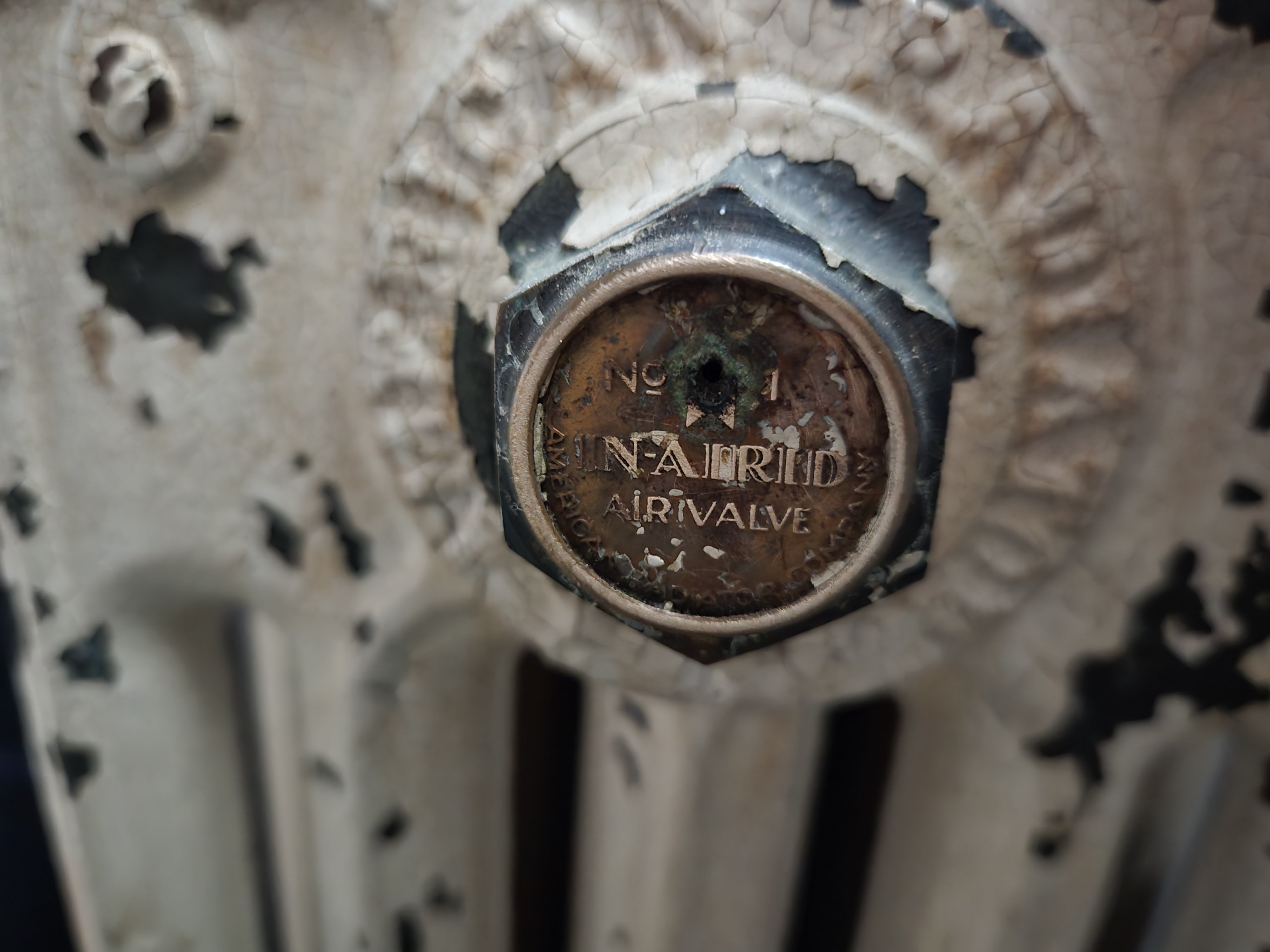Replace or seal radiator plug?


Comments
-
-
That is not a hole or gash but an unusual air vent built into the radiator. It says "air valve" right on it. If it does not leak steam you can ignore it.
The separate, round air vent is indeed installed in the wrong place for a steam radiator, and may have been put in because the built-in vent stopped working. You will get more heat out of the radiator if you move that down to the tapping that you should find about 1/3 of the way up from the bottom on the end section.—
Bburd1 -
Huh, the hole sometimes makes gurgling sounds during a cycle but nothing comes out. The maid-o-mist vent seems to be working as expected though. Thank you for the tip on moving it, learn more about these every year!0
-
@CT_Minh, that looks like an IN-AIRID air vent. According to Dan Holohan, this vent "showed up in the 1920s. They called it IN-AIRID and it was the invention of Leslie M. Stadelhofer of Newark, New Jersey. The American Radiator Company bought the rights and sold them. These vents were for one-pipe steam and they fit inside the radiator.
"This was brilliant because it put the vent in a place where people couldn’t damage it, but there was more to it than just that. IN-AIRID had a spring-loaded seat that sealed the last radiator section from the next-to-last section. When steam enters the radiator from the bottom, it rises to the top of the radiator because it’s lighter than air. Once at the top, the steam wants to move horizontally across the top of the radiator and toward the vent. Without that spring-loaded seat, the steam would close the vent before most of the radiator was hot. But with it, the steam has to take a detour downward through that next-to-the-last section, and then upward into the final section. This ensured that the one-pipe radiator would heat all the way across.
"The vent hole in the IN-AIRID is the dot in the i in the word Air. If that dot gets plugged, the radiator won’t heat because the air can’t get out, so we need to beware of painters. I’ve fixed many heating problems with a paperclip. All I had to do was poke the paint out of the hole. I loved seeing the look on the building owner’s face when I did that."
You can find the patent here:
https://heatinghelp.com/systems-help-center/in-air-rid-vent-patent/
And more info here:
https://heatinghelp.com/news-and-media/dead-men-tales/the-hidden-air-vent/President
HeatingHelp.com3 -
@Erin Holohan Haskell Thanks for the info. I too have an IN-AIRID in one of my single pipe steam system radiators, pls see pic. However, I also have a standard air valve half way down the radiator. Do I need both? If not, and I suspect the IN-AIRID is malfunctioning (it is 100 years old after all!), does it "simply" unscrew and can be replaced with a standard plug? Do you happen to know the size plug? I am a beginner and really appreciate any advice.
1 -
the added vent is in the wrong place but i suppose the in air rad will make it work properly in the same way the in air rad does for itself. It blocks the connection between the second to last and last tube so the steam has to fill to the bottom of the second to last tube before it gets to either vent.
0 -
if it isn't leaking steam leaving the old vent in place won't hurt anything.
0 -
That round air vent might have been installed by a well intentioned novice, not understanding the system. You may find that your radiators will work well with out them.
0
Categories
- All Categories
- 87.4K THE MAIN WALL
- 3.3K A-C, Heat Pumps & Refrigeration
- 61 Biomass
- 430 Carbon Monoxide Awareness
- 120 Chimneys & Flues
- 2.1K Domestic Hot Water
- 5.8K Gas Heating
- 115 Geothermal
- 168 Indoor-Air Quality
- 3.7K Oil Heating
- 77 Pipe Deterioration
- 1K Plumbing
- 6.5K Radiant Heating
- 395 Solar
- 15.7K Strictly Steam
- 3.4K Thermostats and Controls
- 56 Water Quality
- 51 Industry Classes
- 50 Job Opportunities
- 18 Recall Announcements






